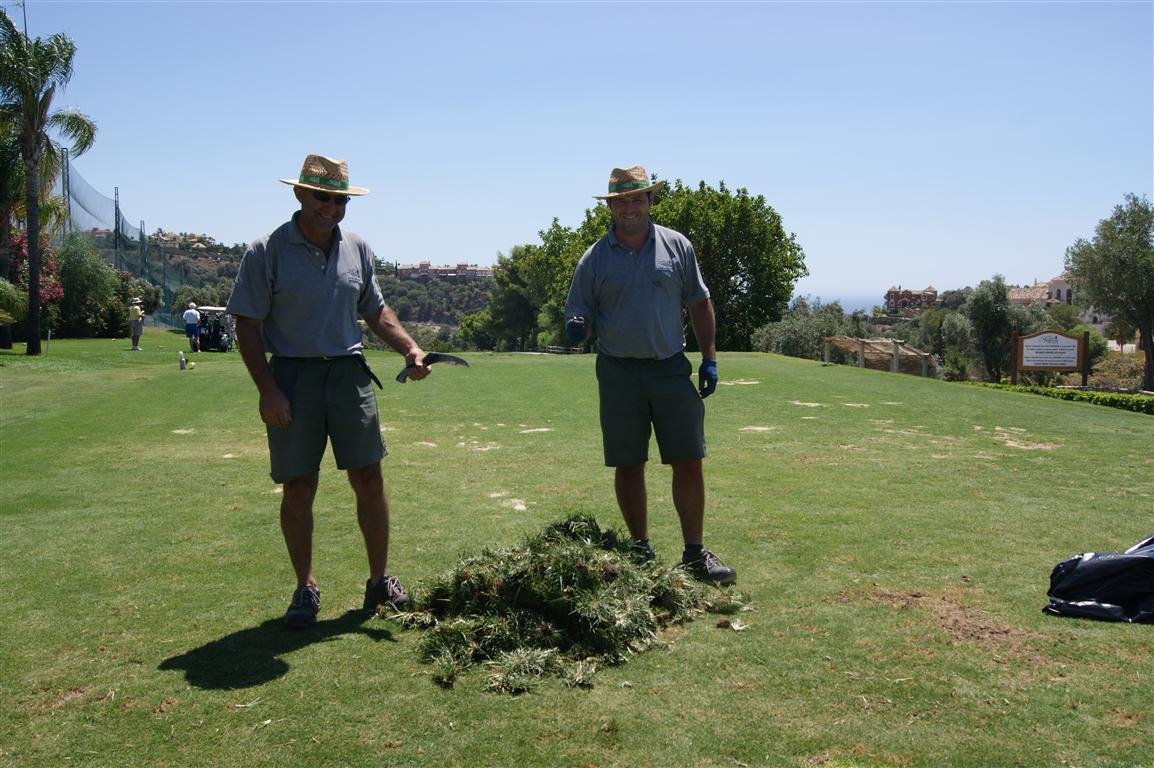
Over the past last summers, we found that in Los Arqueros Golf it had been appearing, as in many golf courses throughout the Mediterranean region a terrible infestation caused by a monocot weed, which until recently time was not taken into Spain as a pest. The “Eleusine Indica” (also called Goosegrass). A powerful root system, forming a clump firmly anchored to the ground. It has the particularity to glean from a level very close to the ground, producing a large quantity of seed (about 10,000 per plant).
This facilitates their rapid multiplication, so that although initially appearing in a certain area of the Golf Course, soon invades large areas. Its seed is easily spread by wind and other means. Initially does not constitute a major pest, has been becoming a big problem for many golf courses. The “goosegrass” like all monocotyledonous weeds, it is very difficult to eradicate in lawns. Being a botanically species grown next to lawns, it is not easy to develop selective herbicides that can eliminate weeds respecting the original golf turf grass. Overall, the means of struggle against goosegrass employees agree to fight Digitaria.
Whatever the chosen herbicide treatment is, it is very important that the application is made on lawns firmly installed, and have at least 2 years of age. Because of course improvements and reforms done in Los Arqueros Golf in the last two years, particularly in the renovation of tees with new Bermuda turf, we opted to be cautious in this regard and not treat them with preemergence herbicides on our new tees. But if we can apply this treatments from the spring of next year. But since Los Arqueros Golf is not left bend easily, we have chosen to implement a cultural measure to combat this scourge, which fortunately only affects a few tees, through a manual removal of these weeds. A slow, cumbersome, laborious and very patient work. Situation that the Arqueros Golf Greenkeepers dominates well.
This page is also available in: Spanish


